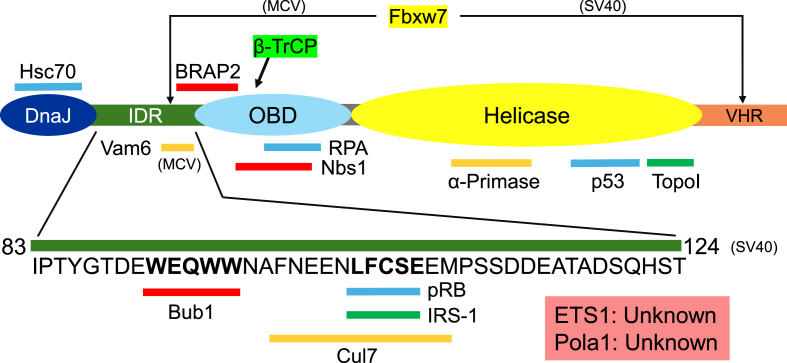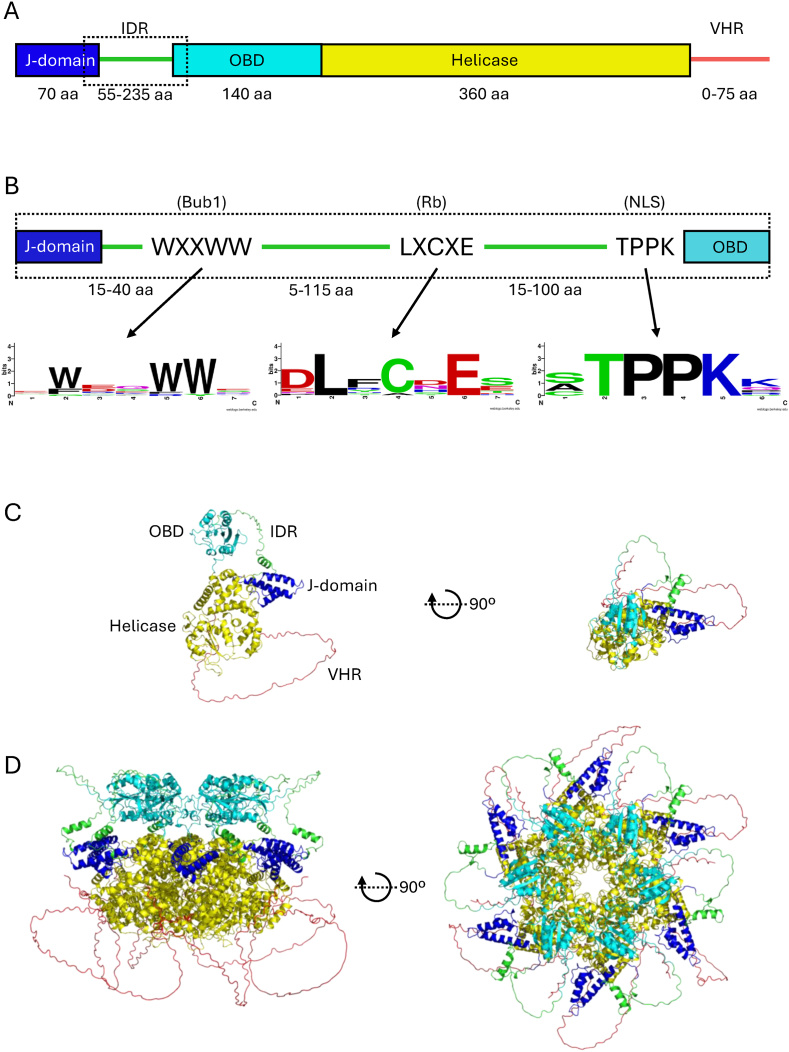多瘤病毒大T抗原:揭示一个复杂的相互作用组。
IF 8.1
Q1 VIROLOGY
引用次数: 0
摘要
多瘤病毒家族的所有成员都编码一种大T抗原(LT)蛋白,该蛋白在病毒DNA复制、病毒基因表达调控和许多细胞通路的操纵中发挥重要作用。在从节肢动物、鱼类到哺乳动物的宿主中发现了100多种多瘤病毒,其中14种感染人类。LT是研究最多的病毒蛋白之一,有数千篇文章描述了它在病毒生产感染和肿瘤发生中的功能。然而,几乎所有关于LT活性的知识都是基于对猿猴病毒40 (SV40)和其他一些病毒的研究。不同多瘤病毒LT蛋白的比较研究揭示了LT蛋白在不同多瘤病毒物种中的功能机制的显著差异。这篇综述的重点是人类多瘤病毒,强调了多瘤病毒lt之间的异同,并强调了我们对该蛋白家族的理解差距。围绕SV40 LT的知识集中,以及对其他人类和动物多瘤病毒编码的LT蛋白的机制研究的缺乏,严重限制了我们对这一重要病毒家族生物学的理解。本文章由计算机程序翻译,如有差异,请以英文原文为准。



Polyomavirus large T antigens: Unraveling a complex interactome
All members of the polyomavirus family encode a large T antigen (LT) protein that plays essential roles in viral DNA replication, regulation of viral gene expression, and the manipulation of numerous cellular pathways. Over 100 polyomaviruses have been discovered in hosts ranging from arthropods and fish to mammals, including fourteen that infect humans. LT is among the most studied viral proteins with thousands of articles describing its functions in viral productive infection and tumorigenesis. However, nearly all knowledge of LT activities is based on the studies of simian virus 40 (SV40) and a few other viruses. Comparative studies of LT proteins of different polyomaviruses have revealed a remarkable diversity in the mechanisms by which LT proteins function across different polyomavirus species. This review focuses on human polyomaviruses highlights the similarities and differences between polyomavirus LTs and highlights gaps in our understanding of this protein family. The concentration of knowledge around SV40 LT and the corresponding lack of mechanistic studies on LT proteins encoded by other human and animal polyomaviruses severely constrains our understanding of the biology of this important virus family.
求助全文
通过发布文献求助,成功后即可免费获取论文全文。
去求助
来源期刊

Tumour Virus Research
Medicine-Infectious Diseases
CiteScore
6.50
自引率
2.30%
发文量
16
审稿时长
56 days
 求助内容:
求助内容: 应助结果提醒方式:
应助结果提醒方式:


